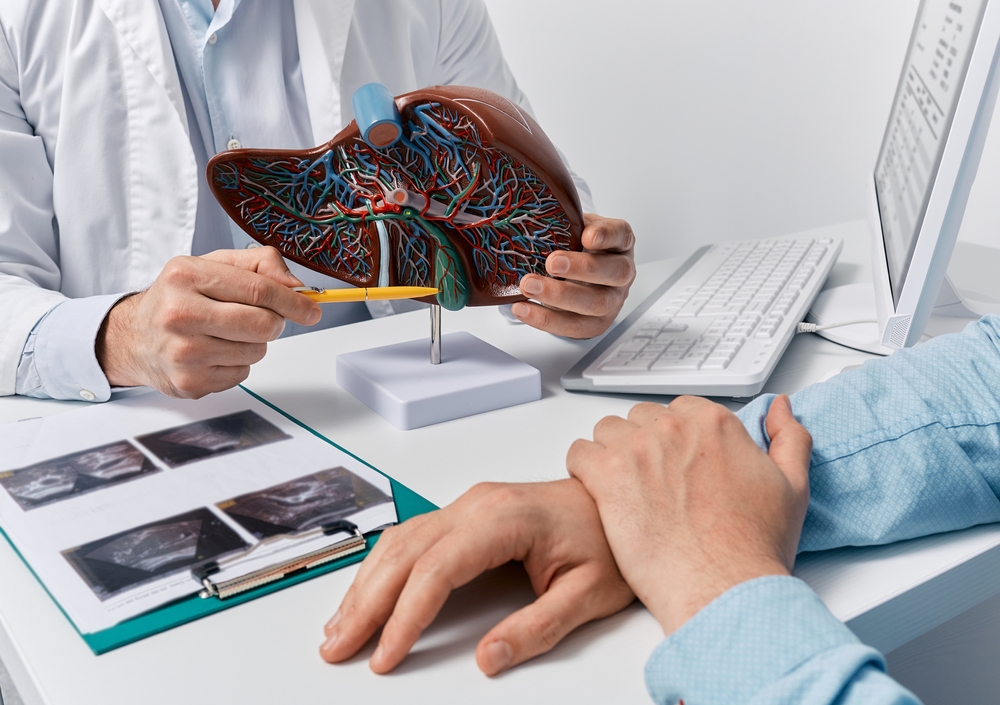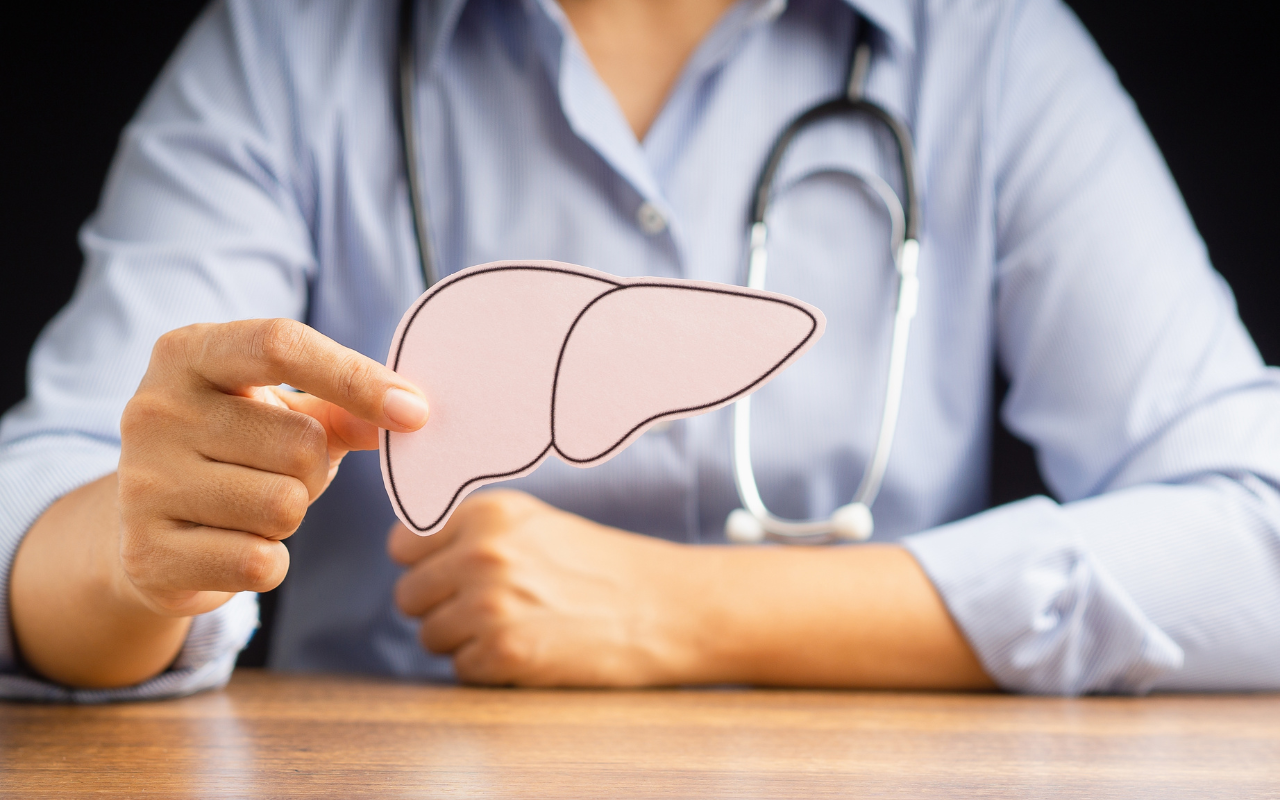With hepatocellular carcinoma cancer rates rising in Australia, we need a dramatic shift in the way we think about screening and understanding of this disease, experts say.
Hepatocellular carcinoma cancer (HCC) used to be the 15th most common cancer-related death in Australia, but in the past 20 years, it has risen to seventh (here).
It is also the fifth most common cause of cancer-related deaths worldwide (here).
Despite this, hepatologists say the condition is poorly understood, prevention and treatment are poorly funded, and not enough people are diagnosed until it’s too late.
According to a Monash Health gastroenterologist and hepatologist, Dr Samuel Hui, when the population think of the common cancers in Australia, they often think of bowel cancer, breast cancer and prostate cancer.
“They probably still are the most common cancers, but they don’t have the same issue of a rising incidence that liver cancer is facing,” he said.

The rise of HCC in Australia
Dr Hui is a co-author of a Narrative Review about HCC surveillance in Australia published in the Medical Journal of Australia.
He told InSight+ that the main reason HCC has increased is because of an increase in obesity levels, and the condition has historically been under-reported.
“Given the rising obesity epidemic, and increased prevalence of metabolic risk factors in our community, this is probably the current biggest contributor to why HCC is continuing to rise in Australia,” he said.
“Historically, over the last few decades, immigration has driven a lot of the rise, in particular with hepatitis B and hepatitis C in our communities.
“The issue with HCC is that, a lot of the time, diagnosis is established without a histological diagnosis, without a biopsy confirming the diagnosis. It’s often just based on [computed tomography (CT)] scans. And so, previously, we’re probably under-reporting the number of HCC cases.”
Current HCC surveillance
There are guidelines from the Gastroenterological Society of Australia that recommend surveillance for the following groups:
- all patients with cirrhosis, except Child–Pugh class C patients ineligible for transplantation; and
- patients with chronic hepatitis B virus infection without cirrhosis in:
- Asian men aged > 40 years;
- Asian women aged > 50 years;
- people born in sub-Saharan Africa aged > 20 years; and
- Aboriginal and Torres Strait Islander people aged > 50 years.
However, according to Dr Hui, it depends on the initiative of both the health care practitioner and the patient and can fall apart at many stages.
“The frequency of surveillance is very high,” Dr Hui said.
“Having to have surveillance coordinated every six months means things can fall apart at any point in the surveillance cascade once patients start surveillance.
“People can miss ultrasounds, people can forget about them, the doctor can consider it’s not so important after a little while or change the surveillance recommendations to outside of guideline recommendations.”
He also highlighted that most people are diagnosed outside surveillance.
“When they’re diagnosed outside of surveillance, their cancer is usually much more advanced than the people who have cancers diagnosed during surveillance.
“A lot of people are having their initial liver cancer diagnosed along with the diagnosis of liver disease. They’ve been diagnosed without being previously recognised that they have high risk liver disease.
“And so that also comes back to an under-recognition of chronic liver disease and cirrhosis in the community as well,” he said.
Changing the mindset
We need to change the narrative around liver cancer, according to Associate Professor Kwang Chien Yee, from the Tasmanian School of Medicine, University of Tasmania, and hepatologist at the Royal Hobart Hospital.
“Most of the patients with liver disease, when they hear about liver cancer, they don’t want to know about it because it has a very bad reputation,” he said.
“People have friends or colleagues who have had a diagnosis of liver disease and have died very quickly.”
If the condition is diagnosed early, it is curable, Associate Professor Yee said.
“We can change the mindset that we’re looking for something that’s treatable. And if we do six-monthly ultrasounds and blood tests, if we find them early, they’re curable,” he said.
Associate Professor Yee believes that in order to engage patients in the surveillance process, they need to be at the centre.
“I think to make it a useful program, we really need to start thinking about how we can engage patients in the process,” he said.
Introducing a national surveillance program
One suggestion to engage patients is to introduce a national surveillance program.
Unlike a breast and bowel screening, it would not include the entire population within a certain age group, but just the people determined to be at risk.
“Identifying this cohort, however, may be challenging as cirrhosis and viral hepatitis may remain asymptomatic for many years,” the authors wrote in the Narrative Review.
Technology such as artificial intelligence and blockchain could help, Associate Professor Yee said.
“[In order to find] patients who need to be screened, our thought is that the best option from a technology point of view is to use blockchain,” he said.
“You can put everyone inside that blockchain; it’s a new concept in health care. We wrote an article that’s quoted as the fundamentals of patient-centred blockchain.
We haven’t quite developed the technology yet, but we are trying to do that for liver cancer.
That’s the best option to bring everyone together: the information flows, streamlined, patient-centred, and everyone can act on them.”
Another way to find at-risk patients is to expand hepatitis C screening.
“Hepatitis C is the most common aetiology of HCC in Australia and most Western countries. In France and the [United Sates], universal hepatitis C screening has been proposed to allow for the institution of direct-acting antiviral therapy,” the authors wrote.
In the meantime, it is important to raise awareness about liver disease and consider surveillance for patients who might be at risk.
“The diagnosis of cirrhosis is important. It’s probably one of the most important facets of trying to diagnose liver cancer at early stages,” Dr Hui said.
Associate Professor Yee agreed.
“We need to raise the awareness among patients, health care professionals, primary health care doctors about liver cancer. The fact that it can be treated and can be cured early,” he concluded.
Read the Narrative Review in the Medical Journal of Australia
Subscribe to the free InSight+ weekly newsletter here. It is available to all readers, not just registered medical practitioners.

 more_vert
more_vert
Why don’t they look at all the new drugs now especially BP drugs.
The author raises very important cause of a chronic disease which may be managed and prevented. Hepatitis can be now actively treated, but needs underlying reasons explored. Alcohol is another, but the rising incidence of NASH is very concerning worldwide. Taking time to report it, to read the reports, to explain to patients it’s significance and active management of NASH reversal. Screening and guidelines need to be followed or if patient declines well documented.
Liver transplantation in early HCC, we need to actively explore this with increasing interest in live donors. My experience recently has been that live donors in liver transplants are possibly the way to go. But, it may need a strategic plan into workforce if transplants increase.
HCC is a disease with improving availability of therapeutic options, very costly, and while survival improves, all possible steps should be taken in terms of prevention and screening.